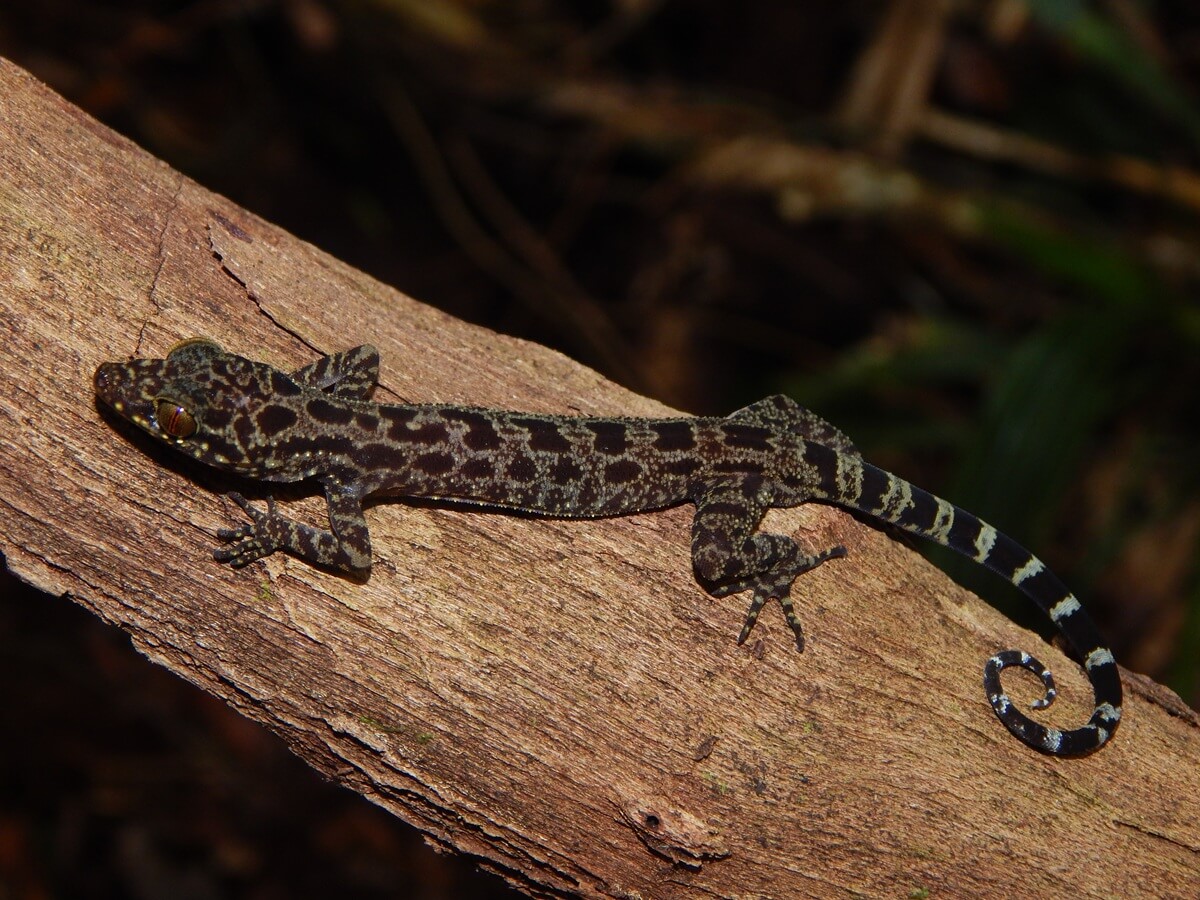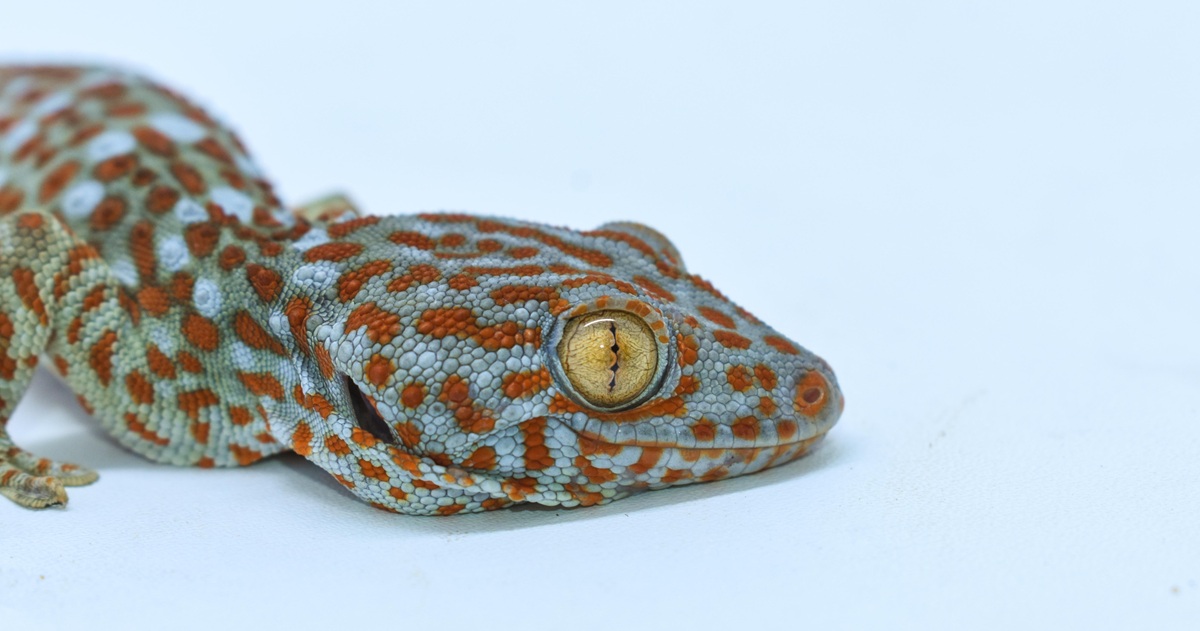June 30, 2025
Among the many cold-blooded creatures that roam our forests, one small group stands out for their agility, charm, and surprising talents: Geckos. While all geckos are lizards, not all lizards are geckos – and that’s just the start of what makes them so special.
In the peat swamp forests of the Kampar Peninsula, which are protected by the Restorasi Ekosistem Riau (RER) project, geckos play an important role in maintaining a balanced and healthy ecosystem.
In this article, we take a closer look at what makes geckos unique, their value in the wild, and why their continued presence in the RER forest matters.
Geckos and Lizards: What’s the Difference?
Both geckos and lizards belong to the order Squamata, which also includes snakes and worm lizards. Within this order, lizards (suborder Lacertilia) form a vast and diverse group. Geckos are just one branch of the lizard family tree, but they stand out in a number of ways.
The difference between geckos and lizards is most obvious when you look at their toes, their sounds, and their skin. These characteristics not only set geckos apart from other lizards – they also help them thrive in environments like RER’s lowland forests.
Read also: Komodo Dragons vs. Monitor Lizards: Can You Spot the Differences?

Sticky Toes and Ceiling Climbers
One of the best-known features of geckos is their incredible ability to climb smooth vertical surfaces, and even walk upside-down on ceilings. This gravity-defying talent comes from their specialised toe pads, which are covered in microscopic hair-like structures called setae.
These tiny ridges generate an adhesive force through a combination of Van der Waals force and electrostatic attraction. Put simply, geckos can ‘stick’ to surfaces without any kind of adhesive, and without leaving any residue behind. This ability allows them to navigate trees, leaves, and even human structures with ease, giving them access to food and shelter other animals might miss.
Talkative Reptiles
Another striking feature that sets geckos apart is their voice. While most lizards are silent, geckos make a range of distinctive sounds. Depending on the species, a gecko’s vocalisations might include clicking, chirping, or even a kind of barking.
In RER’s forests, the Tokay gecko (Gekko gecko)is particularly known for its loud, repetitive call. It sounds like “tok-kay!”, which is what gives the species its common name. Geckos use sound to claim territory, attract mates, and warn off rivals, making them some of the most communicative reptiles in the region.

So next time you hear a strange noise in the night, it might not be a bird or a bug – it could be a lizard sound coming from a nearby gecko.
Softer Skins, Smarter Hiding
Geckos also tend to have softer and more flexible skin than many other lizards. Their skin may be bumpy, velvety, or even translucent in some species, helping them blend into their environment. This camouflage is a vital survival tool in a forest full of predators and prey.
By staying hidden, geckos can ambush insects and avoid becoming dinner themselves. Their skin also sheds easily, which helps remove parasites and heal minor injuries quickly – another small advantage in the wild.
Gecko Habitat in the Wild
Like many of their lizard relatives, geckos are mainly insectivores. That means they mainly eat small invertebrates such as ants, beetles, and moths. In doing so, they help control insect populations, playing an unsung but essential role in maintaining the ecological balance of the forest.
The typical gecko environment is warm, humid, and full of vertical surfaces. In the wild, geckos are often arboreal, living in trees and shrubs, but they’re also known to adapt well to human structures. This flexibility helps them survive even in areas where forests have been partially cleared or disturbed.
The gecko lizard habitat in places like RER’s peat swamp forests is rich in biodiversity. These habitats offer the dense canopy, tree bark, and insect abundance that geckos need to thrive.
Biodiversity in Focus: Geckos of the Kampar Peninsula
Since 2015, RER has been conducting extensive biodiversity surveys to better understand and protect the wildlife in concession areas. Our 2021 herpetofauna survey (which focuses on reptiles and amphibians) confirmed just how rich and varied the region’s reptilian life is.
Among the notable discoveries was the Singapore bent-toed gecko (Cyrtodactylus majulah), a forest-dwelling species that relies on intact habitats to survive. Other reptiles observed during the survey include the black-bearded flying dragon (Draco melanopogon) and a variety of skinks, snakes, and frogs – all indicators of a healthy ecosystem.
Geckos are a valuable part of this forest web. Their presence supports both ecological monitoring and conservation planning. By identifying which species live where – and how they interact with their environment – RER can better protect the peat swamp forests and all who depend on them.
Why Geckos Matter to the Forest… and to Us
While they may not be as well-known as orangutans or tigers, geckos are vital to the forest ecosystem. Their ability to control insects, disperse nutrients, and serve as prey for other animals gives them a key role in the food chain.
Geckos are also important indicators of environmental health. Because they are sensitive to habitat change, their presence – or absence – can tell scientists a lot about how well the forest is doing.
As RER continues to restore and protect the ecosystems of the Kampar Peninsula, geckos remind us that even the smallest creatures can make a big impact.
Learn More and Get Involved
Geckos may be just one type of lizard, but they’re also among the most extraordinary. From their sticky toes and vocal talents to their role in forest biodiversity, geckos are full of surprises.
To learn more about RER’s work in preserving herpetofauna and other wildlife, check out our latest herpetofauna report and stay up to date with biodiversity monitoring and progress updates on our website.